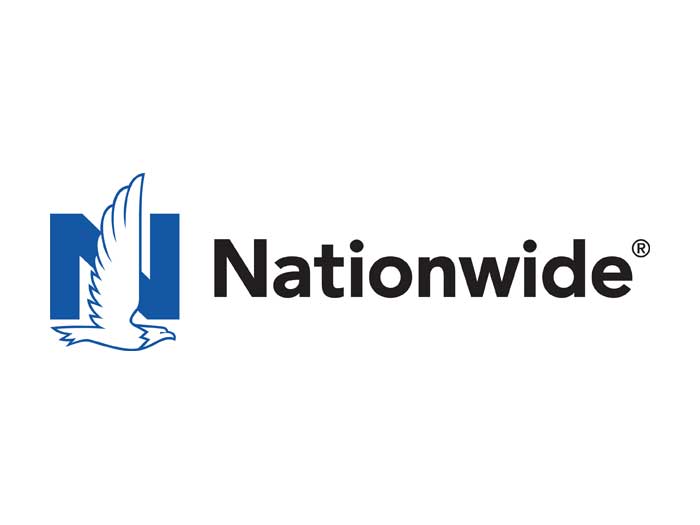Sponsored: Aspen Insurance
The Embedded Risk Engineer

Not long ago, concepts such as solar panels, nanotechnology, battery-powered electric vehicles and “green” buildings were more pipe dream than reality. Today, with those trends a growing part of the global marketplace, insurers need ongoing, in-depth, real-time data for optimal underwriting in order to give buyers proper coverage and accurate pricing.
As one leader of Aspen Insurance’s loss control risk engineering team, Troy Bickerstaff knows better than most the value of staying ahead of the curve when it comes to emerging trends and their potential impact on insurance buyers.
“Our underwriters at Aspen Insurance are plugged into what’s happening with today’s exciting technology developments,” Bickerstaff said. “By using specialized, dedicated risk engineers to deliver unparalleled support to our underwriting teams, we can meet emerging marketplace needs. For insureds in these areas, the result is the best possible approach to risk management, insurance programs and pricing.”
“We evaluate all possible hazards, including the insured’s quality management system, their safety and quality standards, their recall process – anything and everything that goes into their product. Then, we advise the underwriters during the application process.”
— Troy Bickerstaff, Assistant Vice President and Loss Control Manager, Aspen Insurance
Aspen Insurance utilizes a concept by which an underwriting team includes an embedded engineer who works closely with the team’s underwriters and clients. This dedicated professional focuses on supporting the team in meeting the specific needs of a client and continually advises on the evolution of emerging risks associated within the team’s industry vertical.
Bickerstaff explained that Aspen Insurance’s risk engineering approach differs from other carriers that typically offer a centralized loss control/engineering department, primarily because they provide a general approach to support of underwriting.
“The difference in the various approaches to risk engineering is similar to specialization in medicine. If you need open-heart surgery, would you want a general surgeon or a cardiothoracic surgeon?” he asked. “Similarly, if your business faces specialized risks, you need the deep expertise of underwriters and engineers well-versed in the nuances of your industry.”
Bickerstaff and his colleagues support the underwriting teams across Aspen Insurance in four key ways:
Evaluating individual risk
To best understand a potential insured’s risk portfolio, the Aspen Insurance team reviews each new submission along with an applicant’s website, history of product recall and compliance with industry standards, in addition to certifications to assess what types of exposures may emerge. Bickerstaff noted that Aspen Insurance’s claims team is also involved in this process, including in respect of all risk engineering communications with the underwriting team. This tight collaboration between underwriting, engineering and claims is a key differentiator for Aspen US Insurance in the market.
If a new technology is part of a coverage application submission, Bickerstaff will also launch an engineering review of the risk, delivering valuable information to the underwriters, who in turn can utilize the data to help insureds find ways to improve their products and potentially reduce expensive product liability exposures, and possibly even claims.
![]()
 When a company looking to import foreign-made tires applied for coverage, Bickerstaff created a document outlining all the major “key points for casualty,” including factors such as improper curing, use of over-aged rubber and contaminants in the tire itself. Underwriters then used that report with the potential insured, helping them avoid any potential pitfalls in importing foreign-made tires.
When a company looking to import foreign-made tires applied for coverage, Bickerstaff created a document outlining all the major “key points for casualty,” including factors such as improper curing, use of over-aged rubber and contaminants in the tire itself. Underwriters then used that report with the potential insured, helping them avoid any potential pitfalls in importing foreign-made tires.
“We evaluate all possible hazards, including the insured’s quality management system, their safety and quality standards, their recall process – anything and everything that goes into their product,” he said. “Then, we advise the underwriters during the application process.”
Conducting a class of risk consultation
Based on underwriting submission trends or individual risks, the risk engineering team often identifies red flags with certain exposures and prepare detailed “guide sheets” outlining key information about the overall risk to support the analysis of underwriting teams.
![]()
 Bickerstaff created two such guide sheets related to electric vehicles, an emerging, popular alternative to gas-powered vehicles. One guide sheet detailed specific fire hazards associated with electric vehicles (higher voltage, weight distribution and battery blockage), while the other focused on specific fire hazards associated with the lithium ion (Li-Ion) batteries used to power electric vehicles, including ways to mitigate associated risks. Both guide sheets proved helpful to companies looking for coverage who manufactured both Li-Ion batteries and electric cars.
Bickerstaff created two such guide sheets related to electric vehicles, an emerging, popular alternative to gas-powered vehicles. One guide sheet detailed specific fire hazards associated with electric vehicles (higher voltage, weight distribution and battery blockage), while the other focused on specific fire hazards associated with the lithium ion (Li-Ion) batteries used to power electric vehicles, including ways to mitigate associated risks. Both guide sheets proved helpful to companies looking for coverage who manufactured both Li-Ion batteries and electric cars.
“We undertake a very detailed analysis for insureds in which we typically outline the kinds of claims that could happen, the severity, and what measures an insured would need to have in place to proactively minimize claims scenarios. This additional level of risk analysis is something insureds really value and appreciate.”
Evaluating long-term exposures
As a natural extension of the risk consultation effort, Bickerstaff also conducts long-term research and keeps abreast of different types of exposures through monitoring various media and publications, attending lectures and maintaining research contacts on the academic level. Insureds use Bickerstaff’s research to strengthen their loss control efforts, thereby potentially reducing claims and, as a result, keep overall costs down.
“For areas such as nanotechnology or ‘green’ buildings, we conduct research and create guide sheets,” he said. “But we also constantly stay abreast of the long-term aspects of the risks in those areas, keeping up with industry changes and the evolution of specific technologies”.
Providing added risk management expertise directly to insureds
Finally, the risk engineering group provides additional support for insureds via a face-to-face policyholder consultation at the insured’s location, if necessary.
![]()
 Bickerstaff visited a commercial lawnmower manufacturer and identified several cost-saving enhancement opportunities: guidance on contractual wordings, recommendations for strengthening the weldment inspection program and education on managing increased liability exposures due to the use of temporary workers during the company’s peak manufacturing season. As a result, with that added data, the insured was able to reduce costs and potential claims.
Bickerstaff visited a commercial lawnmower manufacturer and identified several cost-saving enhancement opportunities: guidance on contractual wordings, recommendations for strengthening the weldment inspection program and education on managing increased liability exposures due to the use of temporary workers during the company’s peak manufacturing season. As a result, with that added data, the insured was able to reduce costs and potential claims.
“Among the many advantages we offer to insureds, a key benefit we offer is to ensure that our underwriting is based on the underwriters’ full knowledge of the risk, including access to the best available, most accurate data about the unique exposures relevant to the industry, technology, or niche,” Bickerstaff said, adding that the engineering team’s expertise helps underwriters deliver the best possible outcome, but even more importantly, Aspen Insurance’s specialized, integrated risk engineering strategy ultimately benefits the insured.
“The difference in the various approaches to risk engineering is similar to specialization in medicine. If you need open-heart surgery, would you want a general surgeon or a cardiothoracic surgeon? Similarly, if your business faces specialized risks, you need the deep expertise of underwriters and engineers well-versed in the nuances of your industry.”
“Insureds can feel comfortable and confident they are buying a high-quality, value-added, fairly priced product to meet their specific needs,” he said. “With many of these new, emerging risks, that is a critical benefit to them and a competitive advantage for us.”
To learn more about how Aspen Insurance’s loss control risk engineering and underwriting teams can support your organization, contact your broker.
Troy Bickerstaff, Assistant Vice President and Loss Control Manager at Aspen Insurance, can be reached at [email protected].
This article is provided for news and information purposes only and does not necessarily represent Aspen’s views and does constitute legal advice. This article reflects the opinion of the author at the time it was written taking into account market, regulatory and other conditions at the time of writing which may change over time. Aspen does not undertake a duty to update the article.
This article was produced by the R&I Brand Studio, a unit of the advertising department of Risk & Insurance, in collaboration with Aspen Insurance. The editorial staff of Risk & Insurance had no role in its preparation.










